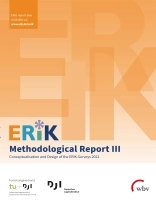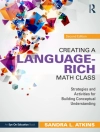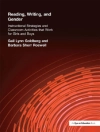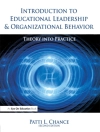The ERi K-Methodological Report III is the third in a series of methodological reports related to the ‘Entwicklung von Rahmenbedingungen in der Kindertagesbetreuung -indikatorengestützte Qualitätsbeobachtung (ERi K)’ study. The report focuses on the conception, sample selection, and survey designs of the ERi K-Surveys 2022. Together with the ERi K-Methodological Report I and II, that cover the ERi K Surveys 2020, it provides comprehensive background information on the ERi K-Surveys conducted in 2022 and describes their progression until December 31, 2021. The subsequent steps, such as implementing the ERi K-Surveys 2022, will be described in a later report.
İçerik tablosu
1 Preface
2 Introduction
3 Target Populations
3.1 Target Population of Directors of Day-Care Centres
3.2 Target Population of Pedagogical Staff in Day-Care Centres
3.3 Target Population of Family Day-Care Workers
3.4 Target Population of Youth Welfare Offices
3.5 Target Population of Providers of Childcare
3.6 Target Population of Children in Day-Care
4 Sampling Frames
4.1 Sampling Frame of Directors of and Pedagogical Staff in Day-Care Centres
4.2 Sampling Frame of Family Day-Care Workers
4.3 Sampling Frame of Youth Welfare Offices
4.4 Sampling Frame of Providers of Childcare
4.5 Sampling Frame of Children in Day-Care
5 Sampling Designs
5.1 Sampling Design for Directors of and Pedagogical Staff in Day-Care Centres
5.2 Sampling Design for Youth Welfare Offices and Family Day-Care Workers
5.3 Sampling Design for Providers of Childcare
5.4 Sampling Design for Children in Day-Care
6 Contacting and Survey Designs
6.1 Contacting of Directors of and Pedagogical Staff in Day-Care Centres
6.2 Contacting of Youth Offices and Family Day-Care Workers
6.3 Contacting of Providers of Childcare
6.4 Contacting of Children in Day-Care
7 ERi K Parent Survey
8 Survey Instruments
8.1 Pretest for Children
8.2 Questionnaire Revisions












